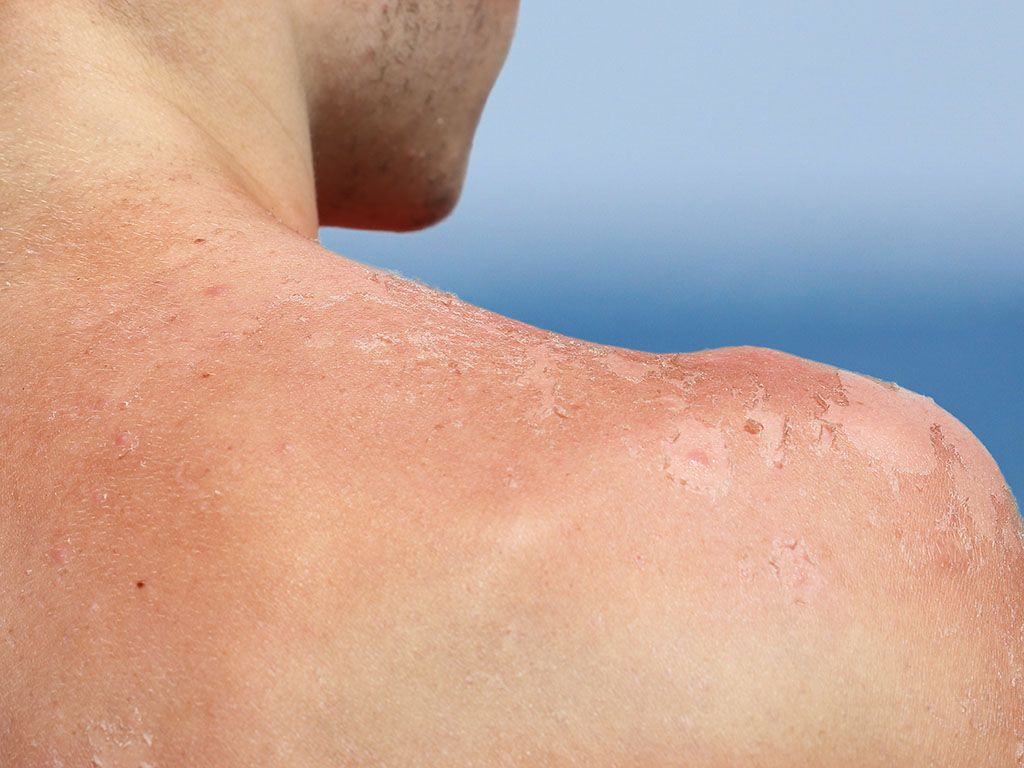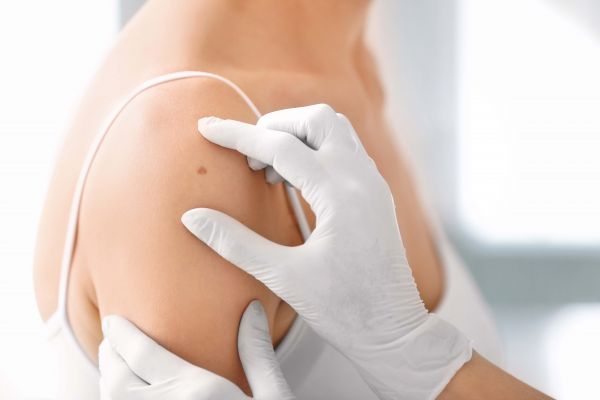Sun safety is the best way to prevent skin cancer
You didn’t expect to be outdoors all day but were caught unprepared and without sunscreen. Now you have a blistering red burn. Is there anything you can do to reverse the UV radiation damage to your skin that can potentially lead to cancer?
An online search suggests that some “morning after” lotions and derivatives of vitamin A may do that. But according to dermatologist Gyorgy Paragh, MD, PhD, Associate Professor of Oncology and Chair of Dermatology at Roswell Park Comprehensive Cancer Center, the most accurate answer is “no.” At least, not yet.
“Currently, there are no established, commercially available and scientifically proven techniques to effectively reduce cancer-causing damage immediately after a sunburn," he advises. "The most important thing is to prevent sunburn. There is research interest into reducing damage after sunburn, but no over-the-counter products are available that I would recommend.
“Many products currently available for after-sunburn care can soothe the skin and help with healing after burning, but they do not erase the long-lasting effects of sunburn. Besides using these skin-soothing products after a sunburn, it is crucial to remember that our skin is more susceptible to additional damage while it is healing. Therefore, in addition to healing the skin, it is also critical to practice sun-safe behavior and prevent further sun damage after sunburn.”
Sun damage is the leading cause of skin cancer
The skin is your body’s largest organ. It helps to maintain body temperature and protects your body from water loss, injury and infection. Similar to all forms of cancer, skin cancer originates when cell damage interferes with the well-regulated and systematic process of normal tissue growth and restoration, causing cells to act abnormally and resulting in the formation of tumors and cancerous growths.
The most common skin cancer is basal cell carcinoma, a type that grows slowly and rarely spreads or metastasizes to other parts of the body. However, other common types of skin cancer, such as squamous cell carcinoma and melanoma, can cause potentially deadly metastatic disease by spreading to other organs. Melanoma begins in pigment cells called melanocytes and is the most concerning type of skin cancer because it is more likely to metastasize (spread) than squamous or basal cell carcinomas.
Family or personal history, a weakened immune system, exposure to chemicals like arsenic or industrial tar, smoking, previous radiation therapy and high-risk human papillomavirus (HPV) infections are all considered risk factors for skin cancer. Although all these factors influence our risk of developing skin cancer, sun exposure is the cause of the vast majority of skin cancers.
“If you had one sunburn, it doesn’t mean that you will definitely get skin cancer.” Dr. Paragh explains. “The fact that you develop a sunburn relatively easily, however, signals that your skin is more likely to get damaged by sunlight. If you take that sunburn as an indicator and learn from it, you may prevent cancer by not burning again and again and avoiding the sun better.”
Why Roswell Park for skin cancer?
We provide multidisciplinary cancer care that integrates the expertise of dermatologists, dermatopathologists, plus surgical, medical and radiation oncologists
Damage is caused by both UVA and UVB radiation
Ultraviolet (UV) radiation from sunlight has two primary ways of causing skin damage. Ultraviolet A (UVA) radiation mainly causes indirect DNA damage to the cells, while UVB causes direct DNA damage. Skin cells can repair much of the damage, but some of the damage will result in long-lasting changes to the code of the DNA in skin cells. The damage caused by UV radiation can also can be so acute and overwhelming that many skin cells die, which results in sunburn.
“The accumulation of changes to our DNA can ultimately lead to changes in the cells that break the normal balance of cell growth. The cells lose their regular function and start misbehaving. The tissue loses its normal architecture, and ultimately tumors form,” Dr. Paragh says.
“An acute burn can lead to insidious low-grade damage that percolates in the skin and gets passed down to new daughter cells, and that damage survives in the skin for decades and decades. When previously damaged cells suffer additional damage, we ultimately risk developing skin cancer. But meticulous sun protection and some medications may halt this process and may even reverse it. This is something we’re interested in, and this is what we’re researching.”
Roswell Park investigates reversal of UV skin damage
Dr. Paragh was co-senior author of a Roswell Park study showing that sun exposure leads to specific cumulative patterns of UV-induced mutations in the skin, and that deep-sequencing of skin DNA samples can identify potentially cancer-causing skin damage before skin changes are visible. The research team at Roswell Park is investigating how early genetic changes accumulate in the skin in order to better understand how medical interventions may be able to reduce skin cancer risk.
“It’s a misconception that you need to burn, and you need to have blistering burns, to develop skin cancer,” Dr. Paragh says, adding that many people at risk of skin cancer may not have had many sunburns or may not have had sunburns at all but were frequently exposed to the sun and suffered constant low-grade damage. “Our research is focused on improving the currently available treatments and creating new therapies to reduce skin cancer risk.” For example, recent research at Roswell Park found that some UV damage can be reversed with photodynamic therapy, a now widely available treatment that was pioneered at Roswell Park decades ago.
How do you best prevent skin cancer?
Ultimately, the best way to prevent skin cancers is to avoid bad sunburns and low-grade chronic sun damage – by every means and best practice available. This includes avoiding peak UV index hours, seeking shade, wearing wide brim hats and UV protective clothing, and mindful application and re-application of UVA and UVB protective 30-50 SPF sunscreens.
“Knowing your individual susceptibility to sun damage is essential in choosing the best prevention strategies and in understanding how careful you need to be. There are families in which skin cancer is much, much more prevalent than in other families,” says Dr. Paragh. “This is really important to take into consideration. People will understand better their own risk if they know what happened previously in their family.”
Besides mitigating sun damage, it is also a good idea to examine your skin regularly and alert your doctor if you find any new or suspicious moles, bumps, scaly patches, or sores that don’t heal. And if you’ve had a history of bad sunburns or have other risk factors, seek regular skin cancer screenings.




